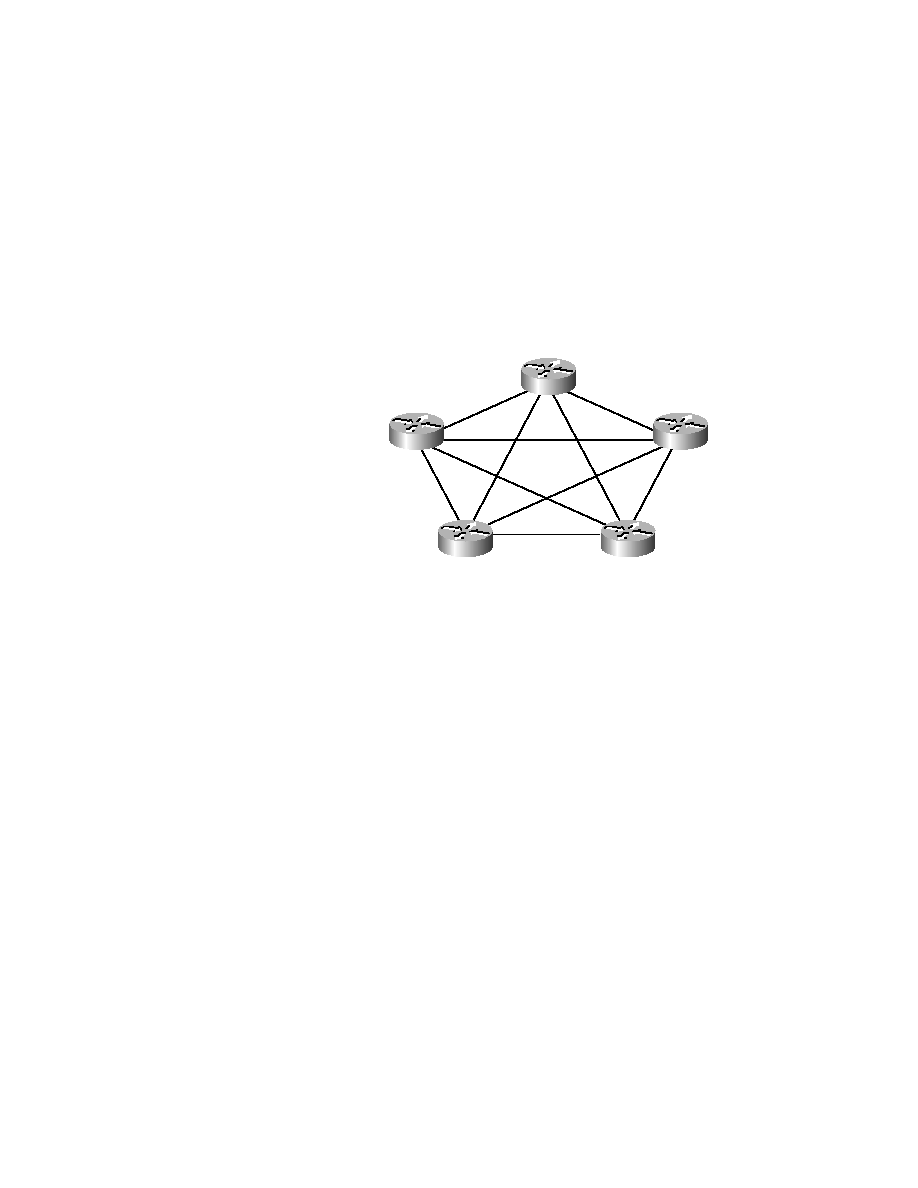
the formula n(n-1)/2. This means that for 20 routers, there are 190 circuits
or connections between the routers. Let's look at Figure 9.1 to see a full-
mesh network.
RouterB an update, RouterB will never send that information back to
RouterA. BGP split-horizon rules mean that if an iBGP peer in AS 100 sends
an update to a peer in AS 200, it will never send another router in AS 200 the
same update. This is the reason for the full mesh in the internal network--
so that all the routers in the network can share information they have learned
with one another.
ing updates to one another. You can configure one router as a concentration
router to handle all of the BGP updates. Making a router a route reflector
places the main concentration of your configuration on only one router and
eliminates the need for a full mesh.
number of internal neighbor statements. The concentration router needs to
be the only router configured with neighbor statements and becomes the